

Seeing Is Believing: Army Unveils Realities South of the Litani
Natasha Metni Torbey 16/12 17:23 - Reading : 4 minute(s)
Lebanon Hezbollah Israel Middle East United Nations
On Monday in southern Litani, the Lebanese army went beyond a routine field visit, staging a carefully orchestrated tour for its ambassadors, chargés d’affaires, and military attachés to showcase its operations. From the sector command in the southern city of Tyre, the army’s commander-in-chief, General Rodolph Haykal, outlined to foreign ...
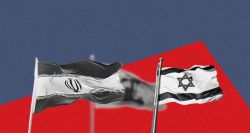
Hezbollah or Iran: Who Will Fall First?
Natasha Metni Torbey 16/12 11:00 - Reading : 4 minute(s)
Lebanon Hezbollah Israel Tehran
Repeated Israeli strikes in southern Lebanon, increasingly explicit warnings of war, signals exchanged between Tel Aviv, Tehran, and Hezbollah, and seemingly peripheral events, such as the Sydney terrorist attack and renewed scrutiny of Iran, may appear disconnected. Viewed together, they form a coherent sequence. The real issue is not escalation ...
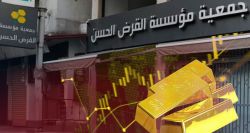
Al-Qard al-Hassan’s Gold: Hezbollah’s New Financial Scheme
Natasha Metni Torbey 10/12 14:00 - Reading : 3 minute(s)
Hezbollah Israel Lebanon Al Qard Al Hassan Hezbollah financing
After introducing ATMs, easy-access loans, and clandestine counters scattered throughout the alleys of Beirut’s southern suburbs, al-Qard al-Hassan (AQAH), Hezbollah’s financial arm, has taken its operations a step further: direct gold trading. Gold bars, coins, and jewelry are reportedly now being offered to the Shiite community, turning gold ...

Lebanon’s Diplomatic Pivot: Understanding Simon Karam’s Role
Natasha Metni Torbey 04/12 12:00 - Reading : 5 minute(s)
Wednesday’s meeting of the ceasefire monitoring mechanism in Naqoura carried the weight of history. Lebanon held civilian-led direct talks with Israel for the first time in decades, a development that offered Beirut a rare opportunity to resuscitate the faltering November 27, 2024, ceasefire and begin moving toward substantive political ...

Quarries in Lebanon: An Out-of-Control Industry with Devastating Costs
Natasha Metni Torbey 20/11 16:20 - Reading : 4 minute(s)
Item 27 on the agenda of the Council of Ministers, which is scheduled to meet Thursday afternoon, has reignited long-standing anger in Koura. The request by the National Cement Company for a permit to “operate and rehabilitate” its quarries in Kfarhazir and Bedbahon immediately brought back to residents the memory of a two-decade-long ...

Is Hamas Rebuilding Its Military Presence in Lebanon?
Natasha Metni Torbey 19/11 20:00 - Reading : 3 minute(s)
Lebanon Hamas Hezbollah Israel
The Israeli strike that targeted the Palestinian refugee camp of Ain al-Hilweh in southern Lebanon on Tuesday night has brought back into focus a question that had mostly stayed out of the spotlight in the conflict, at least since the November 27, 2024 ceasefire, which shifted attention primarily to Hezbollah: Is Hamas in the process of rebuilding ...

Papal Visit Funding: Where Does Lebanon Stand?
Natasha Metni Torbey 18/11 16:10 - Reading : 5 minute(s)
Lebanon The Vatican Papal visit Pope Leo XIV Bkerke Roger Zaccar
With less than two weeks to go before Pope Leo XIV’s visit to Lebanon at the end of the month, preparations have entered their final stage. Roger Zaccar, head of the visit’s financial committee, told This is Beirut that nearly 80% of the required funds have already been secured, with the remaining 20% are still needed to complete the ...

Jeita Grotto: The Hidden Truth the State Refuses to See
Natasha Metni Torbey 14/11 16:05 - Reading : 6 minute(s)
Instead of properly closing a case that should never have existed, the report published on November 13 about the Jeita Grotto incident only deepens the concern, revealing a far more troubling reality. Institutional and scientific oversight is disturbingly lax. Procedures are improvised, responsibilities evaporate, decisions are made without a ...
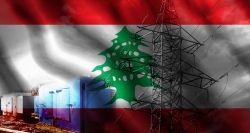
The Power Cartel: Inside, a State Run on Generators
Natasha Metni Torbey 12/11 15:55 - Reading : 5 minute(s)
Lebanon EDL electricity generators Mafia
Lebanon is trapped in an opaque, sprawling energy system that keeps the country locked in an outdated model. Massive fuel imports, a relentless reliance on private generators, a fragile or even nonexistent national sovereignty, and a perpetually postponed shift to renewable energy all feed chronic dependency and block meaningful reform. This ...

Hezbollah–Israel: Heading Toward “Round 2” of the War?
Natasha Metni Torbey 07/11 16:10 - Reading : 4 minute(s)
Nawaf Salam Hezbollah Joseph Aoun Lebanese Army United States lebanon\
Things are moving fast in Lebanon, a country now walking a tightrope. In just forty-eight hours, an open letter from Hezbollah, increasingly intense Israeli raids in the south, new U.S. sanctions, and a shaky government response to Hezbollah’s disarmament have reignited fears of a “renewed” conflict. It all (re)started on Thursday morning, ...

Closed Again: Jeita Grotto, a Victim of a Failing State
Natasha Metni Torbey 06/11 16:50 - Reading : 6 minute(s)
Lebanon Jeita Grotto tourism Laura Lahoud Lebanese Speleo Club
Jeita Grotto is temporarily closed. This was confirmed Thursday morning by Tourism Minister Laura Lahoud. Lebanon’s iconic karstic wonder is shutting its doors for the second time in less than a year. The first closure came after the death of Mapas-Lebanon CEO Nabil Haddad in November 2024, leaving the site without an official manager for eight ...
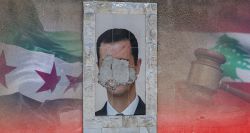
Lebanon Pressed Again to Hunt Down Assad Officials
Natasha Metni Torbey 05/11 14:45 - Reading : 3 minute(s)
Lebanon Syria France Jamil Hassan Ali Mamlouk Abdel Salam Mahmoud Bashar Assad
Lebanon has once again found itself at the center of a sensitive international investigation tied to the post-Assad era. One year after the fall of Bashar al-Assad’s regime on December 8, 2024, Beirut is being asked to cooperate with international judicial authorities to locate senior Syrian security officials accused of war crimes and crimes ...

South Lebanon: Hezbollah and Christian Villages in Quiet Coexistence
Natasha Metni Torbey 04/11 16:10 - Reading : 5 minute(s)
Lebanon Hezbollah South Lebanon Free Patriotic Movement Christians Shia
In some regions of southern Lebanon, particularly in Jezzine, Marjayoun, and Rmeish, predominantly Christian areas directly border localities where Hezbollah holds significant influence. These areas, where municipal networks, social structures, and political actors intertwine, reflect a deeply rooted sociopolitical reality shaped by geography, ...

No-State Zones in Lebanon: Hezbollah’s Parallel State in Southern Lebanon and Beirut’s Southern Suburbs (3/3)
Natasha Metni Torbey 01/11 11:00 - Reading : 6 minute(s)
Nawaf Salam Hezbollah South Lebanon Hassan Nasrallah Dahyeh
Two flags still fly side by side on some hills in southern Lebanon: The Lebanese flag and Hezbollah’s yellow flag. The first symbolizes a weakened state, the second a parallel power that has filled the void left by the Republic. Here, official authority often ends where the Shia group’s control begins. A Fully Administered Territory From the ...

Hezbollah’s Resurgent Arsenal: Borders, Ports, and Clandestine Workshops
Natasha Metni Torbey 01/11 09:00 - Reading : 6 minute(s)
Hezbollah Lebanese Army UN Security Council United Nations Baalbeck
Warnings mount over Hezbollah’s rearmament. After years of focus on Iranian financial backing, Washington and Tel Aviv are increasingly concerned about how quickly Lebanon’s Shia movement is rebuilding its arsenal. A Wall Street Journal investigation published Thursday found that Hezbollah, far from adhering to the November 2024 ceasefire ...

No-State Zones in Lebanon: The Bekaa and the Shadow of the Clans (2/3)
Natasha Metni Torbey 31/10 12:00 - Reading : 5 minute(s)
Baalbeck Damascus Hezbollah United Nations Baalbeck
Along the road from Zahleh to Hermel, portraits of former clan leaders, imams, and martyrs adorn the buildings, set among auto repair shops and fields of cannabis. In this fertile valley, crossed by the Orontes River and framed by the Anti-Lebanon mountains, the state’s presence gradually fades as the road stretches north. In the Bekaa, clan ...

No-State Zones in Lebanon: Palestinian Camps and Unresolved Sovereignty (1/3)
Natasha Metni Torbey 30/10 15:00 - Reading : 4 minute(s)
The killing of Elio Abou Hanna, a 24-year-old Lebanese man shot overnight Saturday to Sunday in Shatila by members of a Palestinian faction, has reignited a debate Lebanon has never truly resolved: a chronic issue of areas where the state no longer holds authority. Elio was shot while sitting behind the wheel of his car. A camp official described ...
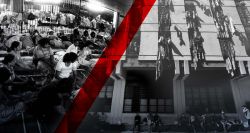
Lebanon’s Prisons Buckle Under Inmate Surge
Natasha Metni Torbey 27/10 18:00 - Reading : 3 minute(s)
Stepping into Roumieh Prison in Matn, one might mistake it for a transit camp rather than a facility meant to enforce sentences. Built to hold 1,000 to 1,200 inmates, it now houses nearly 4,000 - more than triple its intended capacity. The national situation is equally grim. Human Rights Watch reports that Lebanon’s prison system officially has ...

Clearfield's Mechanism: Remaking Peace, Once Again
Natasha Metni Torbey 24/10 18:10 - Reading : 5 minute(s)
Nawaf Salam Lebanon Hezbollah Mechanism Joseph Clearfield ceasefire
Same story, same players. After every lull along the southern border, the same words return, the same statements roll out, the same diplomats spring into action, each convinced that this time, “it’s different.” We hear about a “gradual de-escalation plan,” a “monitoring mechanism,” a “return to the core resolutions.” Earnest ...
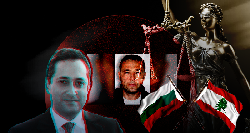
August 4, 2020: Key Developments in the Grechushkin Case
Natasha Metni Torbey 23/10 17:40 - Reading : 5 minute(s)
Lebanon Port explosion Justice Bulgaria Igor Grechushkin Tarek Bitar
There are renewed signs of progress in the investigation into the Beirut port explosion of August 4, 2020. Two judicial tracks are taking shape: that of investigating judge Tarek Bitar, still mired in the legal actions brought against him, and that of Igor Grechushkin, the presumed owner of the Rhosus, currently detained in Bulgaria. Meanwhile, ...

Lebanon 2019: Behind a Programmed Revolution (2/2)
Natasha Metni Torbey 22/10 12:30 - Reading : 11 minute(s)
Central Bank of Lebanon Free Patriotic Movement Amal Banks
Lebanon has an exceptionally dense civil society sector. Hundreds of local NGOs receive funding from international organizations such as the European Union, various United Nations agencies, private foundations like Ford, Rockefeller and Open Society, as well as contributions from the diaspora. Most of this funding is fully declared, independently ...
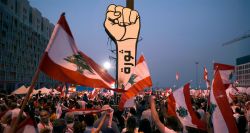
Lebanon 2019: Behind a Programmed Revolution (1/2)
Natasha Metni Torbey 17/10 12:00 - Reading : 5 minute(s)
Lebanon Covid-19 Ukraine revolution October 17
Six years have passed since the October 2019 uprising, an upheaval whose effects continue to heavily weigh on Lebanon. In just a few days, the country appeared to unite against a political class widely seen as corrupt and incapable of averting the looming economic collapse. This surge of public anger culminated in the resignation of Saad ...
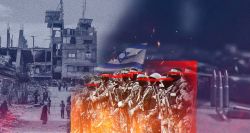
Disarming Hamas: How Could Gaza Be Demilitarized?
Natasha Metni Torbey 15/10 20:00 - Reading : 7 minute(s)
Nawaf Salam Hamas Palestine Donald Trump Turkey
The peace plan co-signed on Monday in Sharm el-Sheikh by US President Donald Trump and the leaders of Egypt, Qatar and Turkey raises a crucial question: How would Hamas be disarmed? The Trump plan lays out a stark reality: Gaza must be demilitarized. To achieve this, a stabilization force will need to be created. On paper, the plan seems ...

Syrian Prisoners in Lebanon: One of Many Unresolved Cases
Natasha Metni Torbey 15/10 16:15 - Reading : 3 minute(s)
Lebanon Damascus Syria Prisons
A high-level Syrian delegation arrived in Beirut on Tuesday to address a long-neglected issue in strained bilateral relations: the case of Syrian detainees in Lebanese prisons. Officially, the meeting aimed to finalize a judicial agreement to organize the transfer of Syrian nationals incarcerated in Lebanon back to Syria within a legal framework ...

'Northern Shield:' Deep Beneath the Border, a Hunt for the Tunnels of Death
Natasha Metni Torbey 12/10 12:00 - Reading : 5 minute(s)
Lebanon Hezbollah UNIFIL South Lebanon
A siren pierces the cold southern Lebanese night. Peacekeepers cross the Blue Line, weapons and detectors in hand. Beneath their feet, invisible and silent, tunnels snake for hundreds of meters, potential routes for stealth incursions or kidnappings. It’s December 2018. Israel is about to launch Operation “Northern Shield,” a systematic hunt ...

Waste Crisis: Heading Back to the 2015 Chaos?
Natasha Metni Torbey 09/10 15:40 - Reading : 4 minute(s)
The shadow of Lebanon’s 2015 waste crisis loomed briefly over the country once again. On Tuesday morning, Ramco trucks halted waste collection across Mount Lebanon, Keserwan and Beirut after the Jdeideh landfill abruptly closed in the early hours. Intervention from the Council for Development and Reconstruction (CDR), which ordered the temporary ...
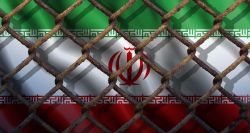
How Much Do Iran’s Proxies Really Cost?
Natasha Metni Torbey 07/10 10:00 - Reading : 9 minute(s)
Nawaf Salam Lebanon Hezbollah Iran
A US Treasury delegation has begun a series of meetings in Beirut with the Central Bank, several commercial banks, and government officials. The mission’s goal is straightforward: to assess how effectively sanctions meant to curb Hezbollah’s financing are being enforced on the ground. This timing of the visit is significant. On September ...
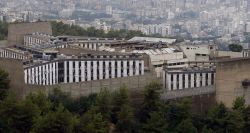
Juvenile Detention in Lebanon: Roumieh to Warwar
Natasha Metni Torbey 03/10 15:50 - Reading : 4 minute(s)
Lebanon Internal Security Forces prisons juveniles
Juvenile detainees in Lebanon are generally between 12 and 18 years old. Some are arrested for minor offenses, such as stealing a phone or reasons linked to homelessness, while others face more serious charges related to organized crime or national security. For years, these children shared the daily life of adult inmates at Roumieh, Lebanon’s ...

Hezbollah vs. the State: A Sisyphus Moment at Raouche
Natasha Metni Torbey 26/09 15:30 - Reading : 4 minute(s)
Nawaf Salam Hezbollah Hassan Nasrallah Amal Government
In a bold display of power that lays bare Lebanon’s fragile balance of forces, Hezbollah flouted every law and directive, trampling both state decisions and promises to its own allies. On Thursday evening, despite an explicit ban from Beirut Governor Marwan Abboud, the Pigeon Rock in Raouche, an iconic national and tourist landmark, was ...

The End of an Era: Hezbollah Without Its Anchor
Natasha Metni Torbey 26/09 12:00 - Reading : 6 minute(s)
Nawaf Salam Hezbollah Hassan Nasrallah Lebanon
September 27, 2024, marked a turning point for Hezbollah. At 6:30 PM, a powerful shockwave tore through Beirut’s southern suburb and its surroundings, but the deeper tremor was political. In a matter of seconds, the “Party of God” entered free fall. Hassan Nasrallah, the movement’s towering figure, its uncontested leader and the symbol of ...
